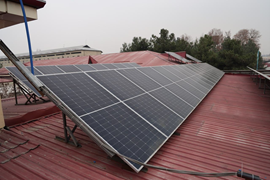Smart Building Implementation


Smart Building Implementation
*Min. at least five requirements for each building
| No. | Name | Place | Automation | Safety | Energy | Water | Indoor Environment | Lighting | Building Area (m²) | ||||||||||||
|---|---|---|---|---|---|---|---|---|---|---|---|---|---|---|---|---|---|---|---|---|---|
| B1 | B2 | S1 | S2 | S3 | S4 | E1 | E2 | A1 | A2 | I1 | I2 | I3 | L1 | L2 | L3 | L4 | |||||
| 1 | Andijan Machine Building Institute: Building A | Andijan, Uzbekistan | x | x | x | x | x | x | x | x | 3440 | ||||||||||
| 2 | Andijan Machine Building Institute: Building B | Andijan, Uzbekistan | x | x | x | x | x | x | x | x | 5600 | ||||||||||
| 3 | Andijan Machine Building Institute: Building C | Andijan, Uzbekistan | x | x | x | x | x | x | x | x | 50,000 | ||||||||||
| 4 | Andijan Machine Building Institute: Building D | Andijan, Uzbekistan | x | x | x | x | x | x | x | x | 15,000 | ||||||||||
| Total | 30,000 | ||||||||||||||||||||
Please compile one row for each building (or homogeneous part of it) by ticking with a “X” for each requirement.
Smart building implementation
total smart building area / total building area × 100%
Example:
Total Building Area: 150,000 m²
16,680 m² / 52,610 m² × 100% = 31%
Smart Building Implementation refers to the integration of advanced technology and automation systems within a building to enhance efficiency, safety, and sustainability. Smart buildings leverage sensors, automated controls, and data analytics to manage resources effectively—such as energy, water, and lighting—while optimizing indoor environmental quality. These implementations are designed to reduce operational costs, minimize environmental impact, and improve occupant comfort and productivity. In academic institutions, smart building strategies can include energy-efficient lighting, water conservation systems, automated safety measures, and enhanced indoor air quality controls, contributing to a more sustainable campus environment.
